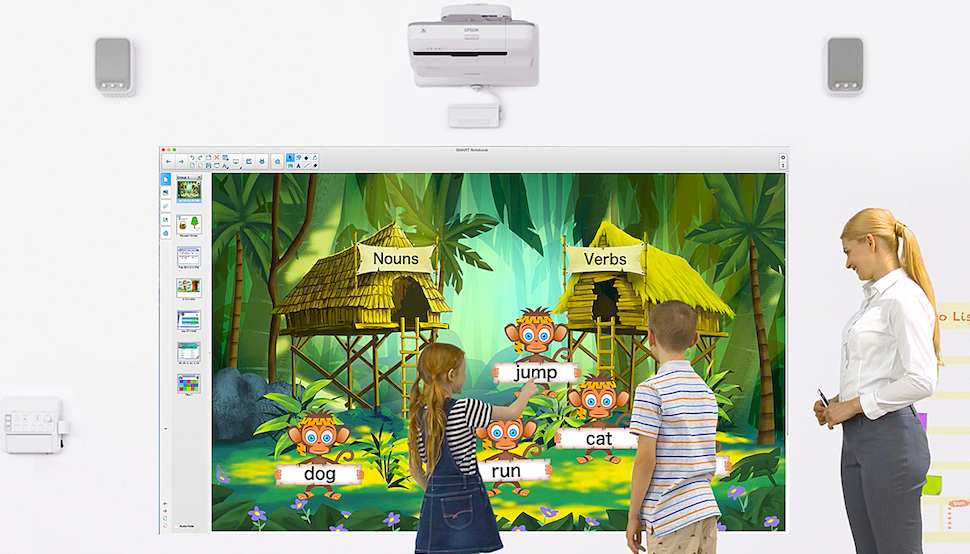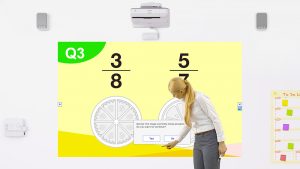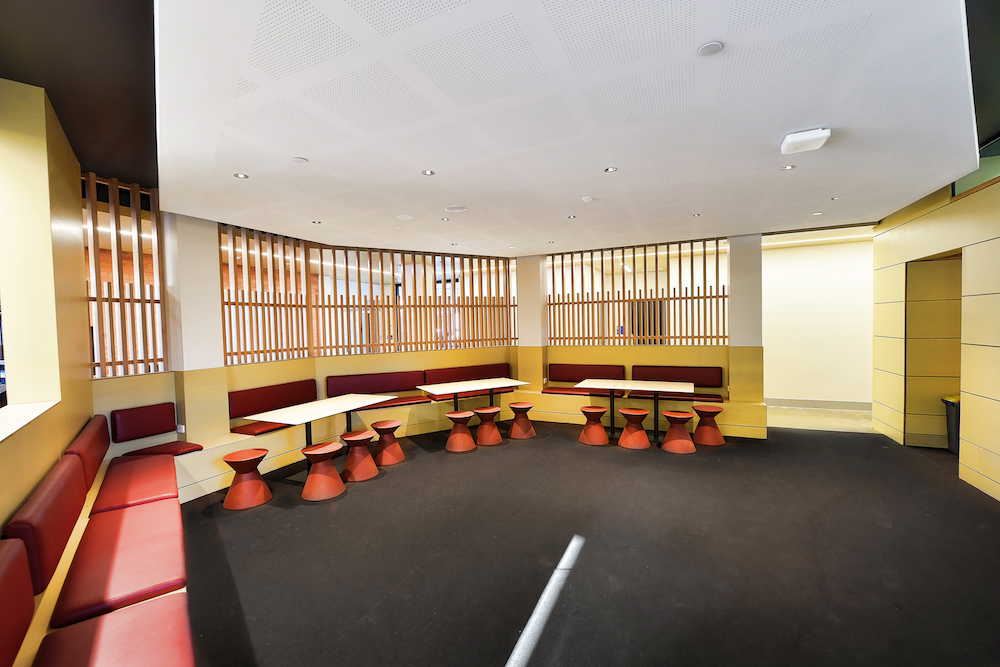Smart classrooms for digital natives

The first interactive whiteboard was released in the early 90s, but in recent years the positioning of Smart technology in the classroom has quietly shifted from a novelty to a necessity.
The discussion around 21st century learning has shifted towards matching the classroom environment to the tech-driven world into which the students will emerge. Competing with the hyper-stimulation of the world outside the classroom is no mean feat. Decades ago, teachers competed with movies, music, fishing and perhaps dancing or a rollicking game of football for their pupils’ attention. Today, distractors are enticing, responsive and engaging. The internet is winning, its most winning feature in the context of the famed impatience of youth? Its instancy.
At home, many students have access to high speed internet on a personal device. If they want to know something the tap it into YouTube or casually demand it of Siri. They have high expectations for movement and sound, and enjoy access to interactive apps that would have children from 60 years ago feeling like they lived in a circus.
Not all of this is good news. Governments, parents and schools are address the negative impact of a virtual existence, while they try to harness its power for the greater good.
We have programs in place to get kids on the move, and legislated time for silent reading (of books not screens), social programs to compensate for electronic childhoods, and cyber-bullying programs to tame a beast that is largely beyond the control of educators.
The tech is here to stay, it will define their futures, and if we want to help them learn how to navigate it safely, perhaps we should join the party? If that’s the way to go, knowing what’s on offer is paramount. Touchscreens and multi-touch displays: what’s out there, and how can Smart equipment enhance learning? To answer this question and more, we have Nathan Fulcher from Epson to refresh our pages with the latest in Smart tech for classrooms.
Industry view
Mr Fulcher said, “any technology aid in the classroom has the potential of enhancing the delivery and pace of the classroom session”.
Updates in real time: “Teachers are able to annotate materials as they to respond to questions or clarify aspects of the lessons,” Mr Fulcher added. In the context of the rapid pace of the world outside school, the familiarity of fast content delivery could augment the engagement rate of the students.
Mr Fulcher elaborated, saying that incorporating interactive technology “facilitates the development of students’ proficiency in using technology to synthesise and report information”.

So, what are the options? “The main technologies available for use in classrooms are “interactive whiteboards, touchscreen panels, and interactive ultra-short throw projectors. He said, “these can be used for a range of functions, including translating hand-writing into text, carrying out polls and quizzes and using software to capture notes”. “Interactive technologies involving ‘finger-touch’ interaction allow for greater student engagement by making lessons more ‘hands-on’,” Mr Fulcher noted.
Smart devices open the classroom to the world, and the existence of internet alone has invited expansive and transformative content into the modern classroom, making intrepid adventurers of us all. However, unless you have a shared interactive platform for the information, the connection remains somewhat stilted, and the content must be redistributed somehow by the teacher.
An interactive whiteboard means a student can stand in full view of the class scouring an interactive diagram for the appendix, or colour-coding the ventricles of the heart. Trial and error, giggles as students suddenly realise why the kidney bean and dish are so-called; and hey presto – biology is fun.
The thing about Smart devices in the classroom is that they allow students to play. The educational apps are limited only by the imagination of developers offer learning experiences in game format – possibly mirroring much of the students’ leisure time at home.
“These devices allow students to interact with content in real time, with students having the capacity to move digital resources on the board,” Mr Fulcher explained. Students are involved in their learning; hence engagement follows.
BYOD schemes supported by Smart technology
“Epson interactive projectors allow the teacher to connect to up to 50 Windows®, Mac®, iOS® or Android devices, display up to four different device screens simultaneously, and control which device screens to display,” Mr Fulcher advised.
“Interactive functionality is also available without a PC connection, so drawing on the projected screen is now possible when connected to other devices, such as visualisers or DVD players. Even when there is no input source, you can annotate on the screen like a whiteboard,” he noted.

With so much to offer, is there something turning teachers from the technology? Why are there so many reporting glitches? Mr Fulcher says the glitches often occur with interactive whiteboards (IWB) rather than projectors and made the following distinction. “An IWB is a system that usually includes a purpose-built board, a computer, a projector and white-boarding software. The elements need to work together and if there is an issue with any one of them, the user may experience a ‘glitch’.
“Interactive projectors, on the other hand, can use any flat, mostly white surface. The interactive functionality and software is built into the projector, as long as the projector is set up correctly by a qualified installer, glitches are very unlikely.”
The role of technology in teaching and learning is an inevitable force, and while some are wondering if the classroom teacher will become obsolete, Dr Derek Alexander Muller who researches the physics of education at The University of Sydney says it’s here to stay.
According to Dr Muller, teaching is a social function, the purpose of which is to “guide the social process of learning”. He says teachers are evolving with the help of technology, rather than prescribing to the theory that a revolution is afoot that will replace teachers entirely. Perhaps any social function designed to engage this generation of ‘digital natives’ just might need to evolve to include more than a smattering of interactive technology, or be just a little bit doomed.







